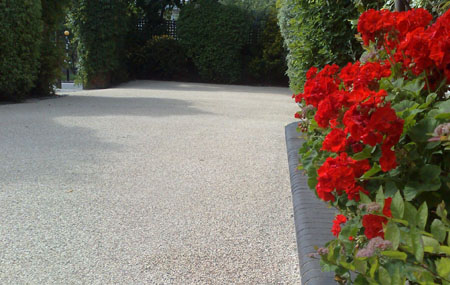With the public awareness increasing and the prices going down, resin bonded driveways are becoming an increasingly popular option. These are laid down using a technique which bonds resin to decorative aggregate. These are trifle expensive if compared to regular driveways but their look and feel makes it totally worthwhile.
Why opt for resin driveways Kent
Just about any aggregate you choose can be laid down on the driveway and finished off with a bonded resin. The most common base materials used as aggregate on resin driveways are gravel, marble, granite and even bauxite. These can be skillfully laid and beautiful color schemes, and textures interplay can be created.
The resin driveways Sitting bourne can add a distinct character to any property and make it stand out. It lends an impeccable quality and value to any property. Additionally, they not only look terrific, but they are extremely quick to lay, are quite slip resistant, do not give out loose stones which can be quite hazardous and can even damage cars, and provide a terrific traction. They are even resistant to UV rays and oil spills.
Just about any aggregate you choose can be laid down on the driveway and finished off with a bonded resin. The most common base materials used as aggregate on resin driveways are gravel, marble, granite and even bauxite. These can be skillfully laid and beautiful color schemes, and textures interplay can be created.
The resin driveways Sitting bourne can add a distinct character to any property and make it stand out. It lends an impeccable quality and value to any property. Additionally, they not only look terrific, but they are extremely quick to lay, are quite slip resistant, do not give out loose stones which can be quite hazardous and can even damage cars, and provide a terrific traction. They are even resistant to UV rays and oil spills.
Types of resin driveways
People often get confused, but there are two kinds of resin driveways—resin bounded driveways as well as resin bonded driveways. They use different systems to use resin to fix aggregates.
Resin bound surface has a porous surface when laid on a suitable material. It allows water to pass through its surface into the ground and thus are ideal for driveways, paths, tree pits or any areas that are vulnerable to flooding or standing water. These surfaces are also popularly referred to as trowelled surfacing or trowelled paving. Here resin is mixed with aggregates using a force action mix process, laid down on the surface and smoothed out with a trowel.
Another popular choice is the resin bonded driveways. These are non-permeable and do not allow the water to permeate through its surfaces. These are usually laid out on a nonporous fine base, or either concrete or tarmac through the scatter method. Thus, it is also popularly called the scattercoat surfacing or scattercoat paving. With these surfaces proper drainage is essential.










